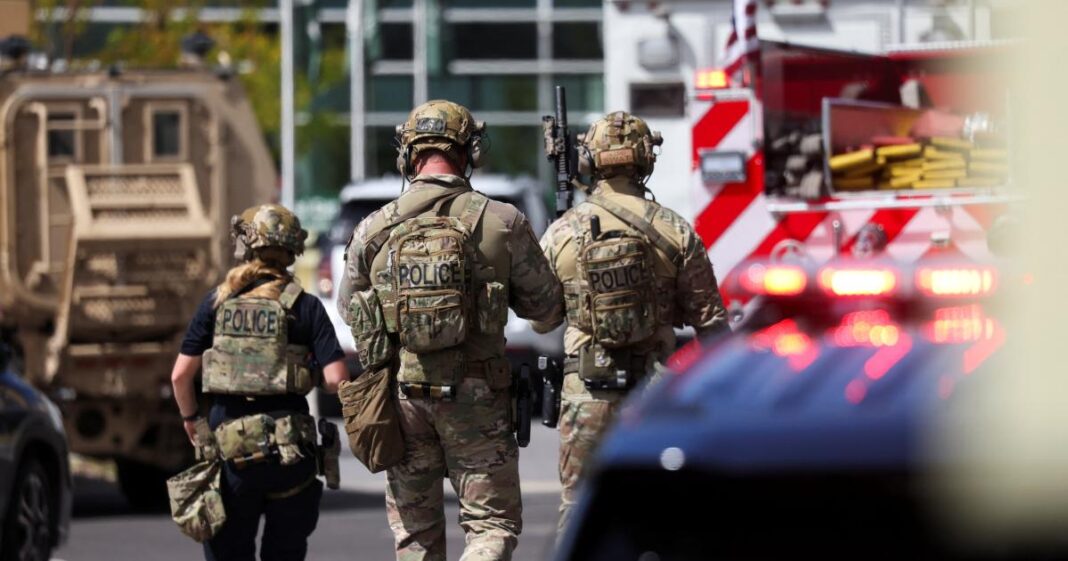Analyzing the Era of Violent Populism in the United States
The landscape of American politics has shifted dramatically over the past decade, revealing a disturbing trend: an era of violent populism. This phenomenon is characterized by increased threats and acts of political violence, affecting a variety of individuals from all political spectra, including notables like Republican Representative Steve Scalise, Democratic Governor Gretchen Whitmer, former Speaker of the House Nancy Pelosi, and former President Donald Trump. Notably, September 2024 marked a significant moment when I argued in Foreign Affairs that Americans should brace for what could be an “extraordinary period of unrest,” featuring serious political assassinations and riots. This prediction has been chillingly validated in 2025 with shocking events like an arson attempt on Pennsylvania Governor Joshua Shapiro’s home, the assassination of Minnesota House Representative Melissa Hortman, and the murder of commentator Charlie Kirk.
The Complicated Blame Game
Kirk’s assassination ignited fervent debates over blame—partisans were quick to point fingers at opposing factions. Many, especially supporters of Trump, vehemently attribute the violence to the “radical left,” while others counter that the right bears more responsibility. However, evidence indicates that both sides have contributed to rising tensions. A comprehensive study from the Chicago Project on Security and Threats (CPOST), which I lead at the University of Chicago, analyzed threats against members of Congress prosecuted by the Department of Justice since 2017. This focused approach has illustrated a striking fact: lawmakers from both parties have faced threats in nearly equal measure.
A Dual Threat Landscape
Research indicates that American political violence is no longer the purview of a single ideological perspective; rather, it springs from both left and right, posing a uniquely perilous challenge to American democracy. Historical patterns reveal that past threats—such as those from the Ku Klux Klan in the 1920s or leftist violence in the 1960s—were largely one-sided. Previous decades saw defined ideologies emerge as culprits, with left-leaning groups dominating the violent narratives until the early 2010s, followed by a marked upswing in right-wing violence leading up to 2015.
Recent statistics echo this concerning shift. Both Cato Institute and Center for Strategic and International Studies (CSIS) studies reveal an uptick in politically motivated assaults from factions across the spectrum. While Cato emphasizes historical right-wing violence, CSIS notes a surge in left-wing attacks, thereby underscoring a complicated duality in current American political violence.
Unpacking Measurement Challenges
Debates over culpability hinge on a misinterpretation of violent behavior. Often, the focus on death tolls misrepresents political risk. A deeper dive into recent incidents shows that strategically increasing threats against politicians have ballooned. For instance, conducted threats against politicians since 2016 have markedly increased, suggesting heightened animosity and political divisions.
CPOST’s analysis of threats made against Congress members between 2001 and 2024 indicates that while threats were historically more targeted at Democrats, by 2016, they became roughly equal for both parties. This timeline is significant, highlighting a drastic shift in political violence definitions, making it crucial to objectively categorize political threats without falling prey to biases.
The Death Spiral of Political Violence
Charlie Kirk’s assassination did not just serve as an alarming snapshot of a relentless trend; it contributed to a cycle of escalation in political violence. The reaction to such acts often incites repercussions—efforts to crack down on free speech and militarize the political atmosphere can ensue. Politicians on both sides have reacted to heightened tensions with increasingly aggressive rhetoric, emboldening factions to adopt more radical stances.
Surveys conducted by CPOST reveal troubling trends: support for political violence has surged over the years. Many Americans now believe in the justifiability of extreme measures to uphold or dismantle political agendas. Research suggests a causal relationship between public support for political violence and subsequent violent acts like assassinations or bombings.
The Need for a Virtuous Cycle
Despite the upswing in political violence, there lies hope in the overwhelming opposition to such tactics among the American populace. Data indicates that a significant majority of Americans from both political parties recognize the dangers posed by political violence. For instance, CPOST’s recent survey revealed that a substantial portion of respondents believe leaders should publicly denounce political violence collectively.
A powerful joint statement made by top political leaders across the spectrum asserting that political violence is unacceptable could serve as a pivotal moment for American society. Strengthening public discourse on the condemnation of political violence may facilitate a shift away from animosity and towards dialogue, healing the nation’s divisive wounds.
Engagement between political leaders in fostering mutual respect could ultimately serve as a bulwark against further escalation. In the backdrop of increasing tensions, purposeful messaging that regards violence as an unsuitable option could alter public sentiment, redirecting towards more constructive methods for addressing grievances.
By embedding messages of unity while expressly condemning violent behavior, U.S. leaders can help curb the spirals of violence threatening democratic foundations.



